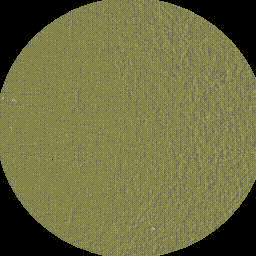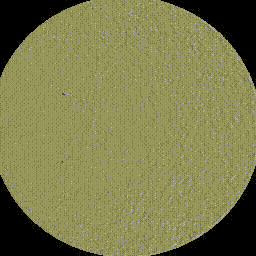Shock interaction
Shock waves are affected by atmospheric turbulence in their propagation paths, which can significantly change their shape and locally modulate the pressure field behind them (Fig. 1). It is known that the sonic boom caused by the modulated shock wave by atmospheric condition makes it difficult to predict accurately intensity of the sonic boom on the ground. Understanding the fundamental interactions between the shock wave and the flow field is also important for complex phenomena such as shock wave-boundary layer interaction (SWBLI), which affects performance of propulsion system in supersonic flight.
To improve performances of supersonic flight, we experimentally investigate fundamental interactions between shock wave and various flow field.
Fig. 1 Schematic of shock-atmospheric turbulence interaction in supersonic flight
Fig. 2 Counter-driver shock tube (CD-ST)
Shock-turbulence interaction
When a shock wave undergoing sudden compression passes through a turbulent flow (random flow), complex changes occur. For example, this phenomenon is closely related to the noise problem (sonic boom) caused by the shock wave generated in supersonic flight. To predict the strength of a sonic boom that changes due to atmospheric turbulence (atmospheric turbulence), it is necessary to understand the fluid physics and to quantify the effect of the shock wave and turbulence interaction. In our laboratory, we have developed a “counter-driver shock tube (CD-ST)” that can perform interactions between shock waves and various flows with, and are conducting the experiments of the interaction of shock wave with grid turbulence. The shock wave propagating through grid turbulence was visualized under changing the strength of the shock wave and the turbulence intensity. As a result, it was confirmed that the deformation of the shock wave progressed as the interaction length of the shock wave and turbulence increased. Among the experiments we have conducted, the interaction between the strongest turbulence (turbulence Mach number *1 Mt = 0.024) and shock wave (shock wave Mach number *2 Ms = 1.03) showed interesting phenomena. Although the shock wave was straight soon after the start of interaction (Interaction length: 65 mm), it became deformed and dispersed when the interaction length exceeded 1 m (Interaction length: 1121 mm). The “broken” phenomenon of shock waves due to turbulence interaction have reported in numerical studies. This study firstly observed the “broken” phenomenon of the shock wave in experiments. Details of the research are shown in the paper listed below.
The followings are shadowgraph visualization movies of the interaction between the shock wave (moving to the right, shock wave Mach number 1.03) and turbulence (moving to the left, turbulence Mach number 0.024). In this method, changes in density are visualized as changes in brightness.
 |
 |
| Interaction length: 65 mm (at the center of the window) | Interaction length:1121 mm |
Related publications
- G. Fukushima, S. Ogawa, J. Wei, Y. Nakamura and A. Sasoh, ” Impacts of grid turbulence on the side projection of planar shock waves,” Shock Waves , 1-15(2021).
doi: 10.1007/s00193-021-01000-2 - G. Fukushima, J. Wei, S. Ogawa, J. Hagiwara, Y. Nakamura and A. Sasoh, “Losing the shock wave front profile due to interaction with turbulence,” Fluid Dyn Res 53(2), 025504 (2021).
doi: 10.1088/1873-7005/abeda4 - T. Tamba, G. Fukushima, M. Kayumi, A. Iwakawa, and A. Sasoh. “Experimental investigation of the interaction of a weak planar shock with grid turbulence in a counter-driver shock tube,” Phys. Rev. Fluids4, 073401 (2019).
doi: 10.1103/PhysRevFluids.4.073401
Shock-forward induced flow interaction
(under construction)
Shock-counter jet interaction
(under construction)






